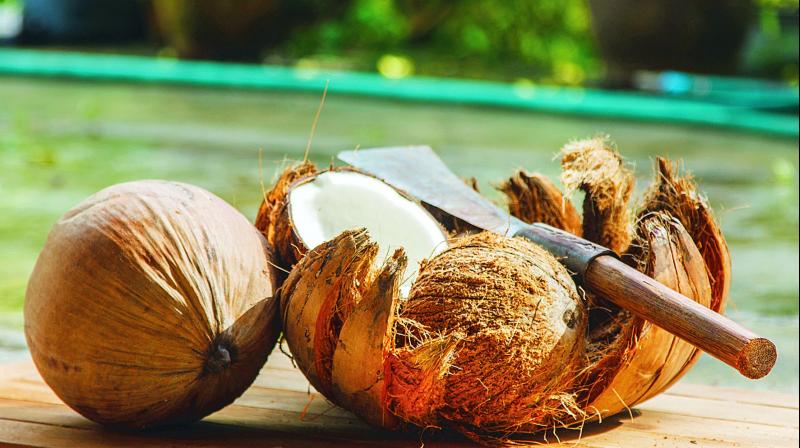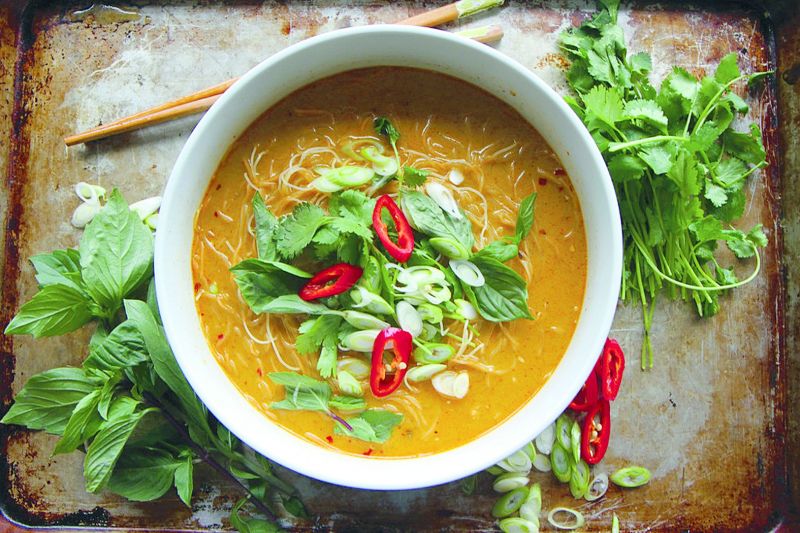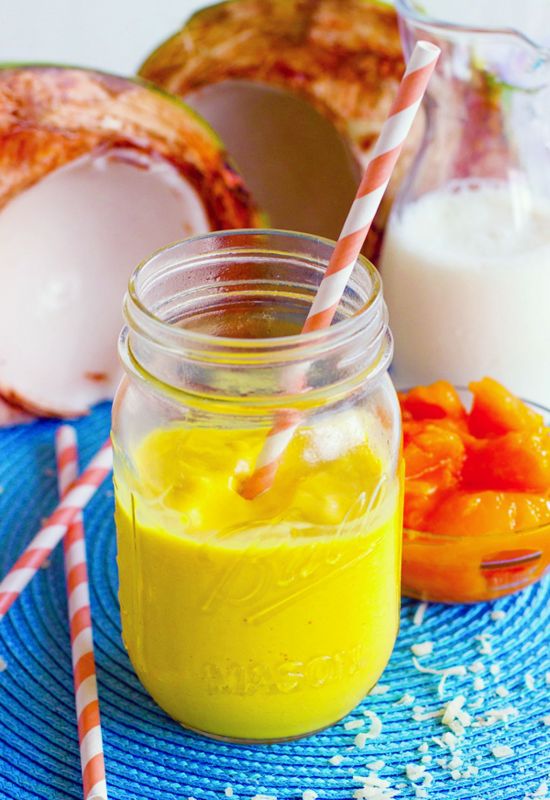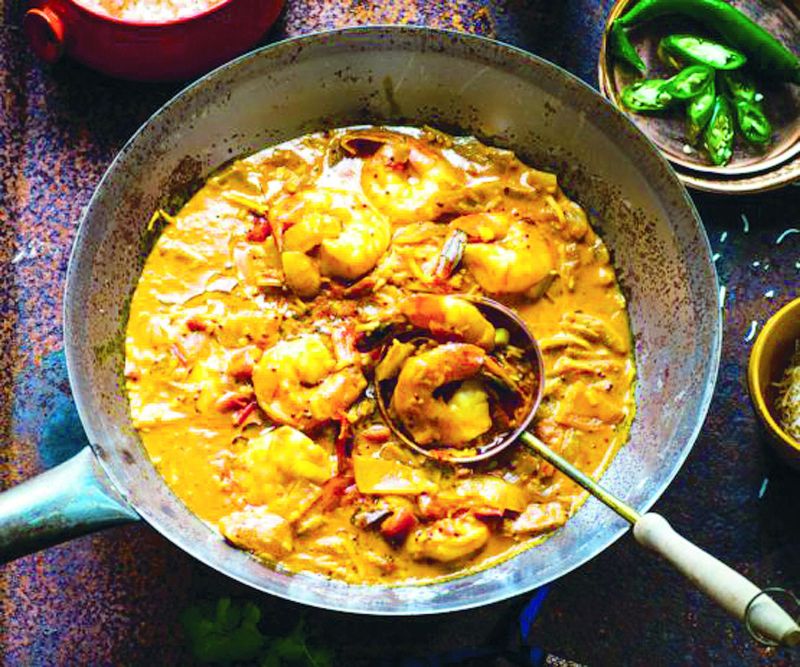Going (coco)nuts!

All good things start with ‘C’ — coffee, chocolate… and my personal favourite, coconut. Classified as a fruit and frequently confused for being a nut, the coconut is actually a one-seeded drupe. In Sanskrit, the coconut palm is known as kalpa vriksha — ‘tree which gives all that is necessary for living’, because nearly all parts can be used — the water, milk, flesh, sugar and oil. Even the husk and leaves are used as furnishings and decoration material. Palm trees produce coconuts up to 13 times a year and although it takes a year for the coconuts to mature, a fully blossomed tree can produce between 60-180 coconuts in a single harvest.
How coconut milk is made
Coconut milk is made in a way surprisingly akin to their dairy counterparts. Coconut flesh (the white part) is grated and soaked in hot water. The coconut cream rises to the top and can be skimmed off. The remaining liquid is squeezed through a cheesecloth to extract a white liquid that is coconut milk. By repeating this process, the coconut milk becomes thinner. The thicker version is used for desserts and rich sauces. Thin coconut milk is used for cooking curries and soups.
Coconut water
Coconut milk is different from coconut water. Coconut water is the clear liquid from the centre of the young, green coconut and is low in fat but rich in easily digested carbohydrates. Coconut water has many health benefits, and is an important treatment for acute diarrhea in the developing world. It is said to have a similar electrolyte balance as that found in isotonic drinks, which some claim to be useful for rehydration after intensive exercise.
Nutritional highlights
Coconut flesh is highly nutritious and rich in fiber, vitamins C, E, B1, B3, B5 and B6 and minerals including iron, selenium, sodium, calcium, magnesium and phosphorous. However, the coconut milk available to us in the market is typically canned and potentially lacking in many of these valuable micronutrients. Unlike cow’s milk, coconut milk is lactose free, so can be used as a milk substitute by those with lactose intolerance. It is a popular choice with vegans and makes a great base for smoothies, milkshakes or as a dairy alternative in baking.
A 100ml serving of canned coconut milk contains:
169 calories
1.1g protein
16.9g fat (14.6g saturates)
3.3g carbohydrate
DIY coconut milk (from desiccated coconut)
Try making your own with just water and unsweetened coconut flakes. Heat the water (make sure it doesn’t boil), add the flakes and blend. Pour through a colander to filter out the coconut pulp, and then squeeze through a cheesecloth to filter out the smaller pieces of coconut. Use immediately or store in the fridge for 3-4 days.
Spicy coconut noodle soup
Preparation time: 10 minutes
Cooking time: 10 minutes
Serves 4
Ingredients:
3 garlic cloves, chopped
2 tablespoons fresh ginger
2 tablespoons red curry paste
2 tablespoons coconut oil
4 cups chicken broth
3 cups coconut milk
6.75 ounces of rice sticks (really thin rice noodles)
Fresh cilantro, Thai basil, red chilli and green onions to garnish

Method:
Combine the garlic, ginger and curry paste in a small grinder (or mince and mash together in a small bowl). Add the coconut oil and combine everything well.
In a large pot, heat the curry-coconut paste over medium heat, frying the paste gently for 1-2 minutes.
Add the chicken broth and deglaze the pot. Add the coconut milk and bring the broth to a boil. Season to taste with kosher salt.
Either place the noodles in the boiling broth, or pour the boiling broth into a bowl of dry noodles and let the soup sit while the noodles cook and soak up the hot broth.
Garnish with fresh cilantro, Thai basil, red chilli and green onions.
Creamy mango coconut smoothie
Ingredients:
200 ml coconut milk
120 gm fresh mango chunks
4 tbsp coconut milk yogurt
1 banana
1 tbsp ground flaxseed, sunflower and pumpkin seed

Method:
Put all ingredients into a blender with few cubes of ice and blitz until smooth. Pour into 1 tall glass (you’ll have enough for a top up) or two short tumblers.
Garnish with some coconut flakes.
Sri lankan prawn curry
Ingredients
Oil 2 tablespoons
Onion 2, chopped
Garlic 3 cloves, chopped
Mustard seeds 3 teaspoons
Curry powder 2 teaspoons
Ground turmeric 1 teaspoon
Salt ¾ teaspoon
Ginger 3 cm piece, peeled and grated or finely chopped
Coconut milk 400 ml can
Shredded coconut ½ cup
Crushed tomatoes 400 gm
Tamarind purée 2 tablespoons
Lemon 1, juice
Brown sugar 1 tablespoon
Prawns 600 gm, raw, shelled, with the tails left on (king tiger prawns are great if within budget but any raw prawns will do)
To serve:
Toasted shredded coconut
Fresh red chilli chopped
Steamed rice

METHOD
Heat oil in a wok or large heavy-based frying pan on medium heat. Cook onion for 8-10 minutes or until
golden.
Add garlic, mustard seeds, curry powder, turmeric, salt and ginger and continue cooking for two minutes, stirring constantly, until spices are fragrant.
Stir in coconut milk, shredded coconut, tomatoes, tamarind purée, lemon juice and sugar. Simmer for about 8-10 minutes to allow sauce to reduce slightly.
Add prawns and continue to cook for about five minutes or until prawns are just cooked through.
Season to taste with more salt if needed.
Garnish with some toasted shredded coconut and chilli. Serve with rice.
Try this:
If you can’t find tamarind purée, replace with two tbsp lemon juice mixed with two tsp brown sugar.
The writer is an executive chef at Molecule Air Bar

